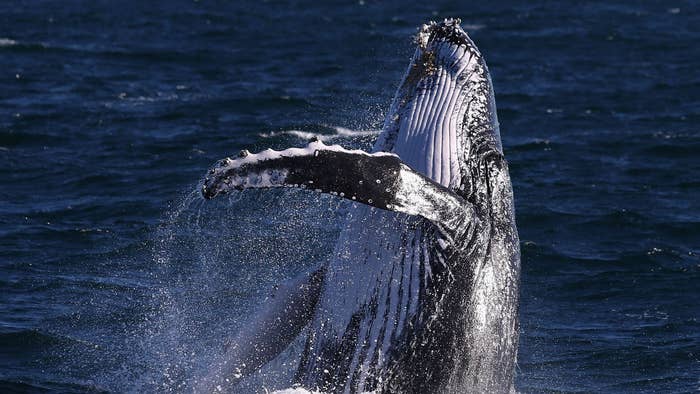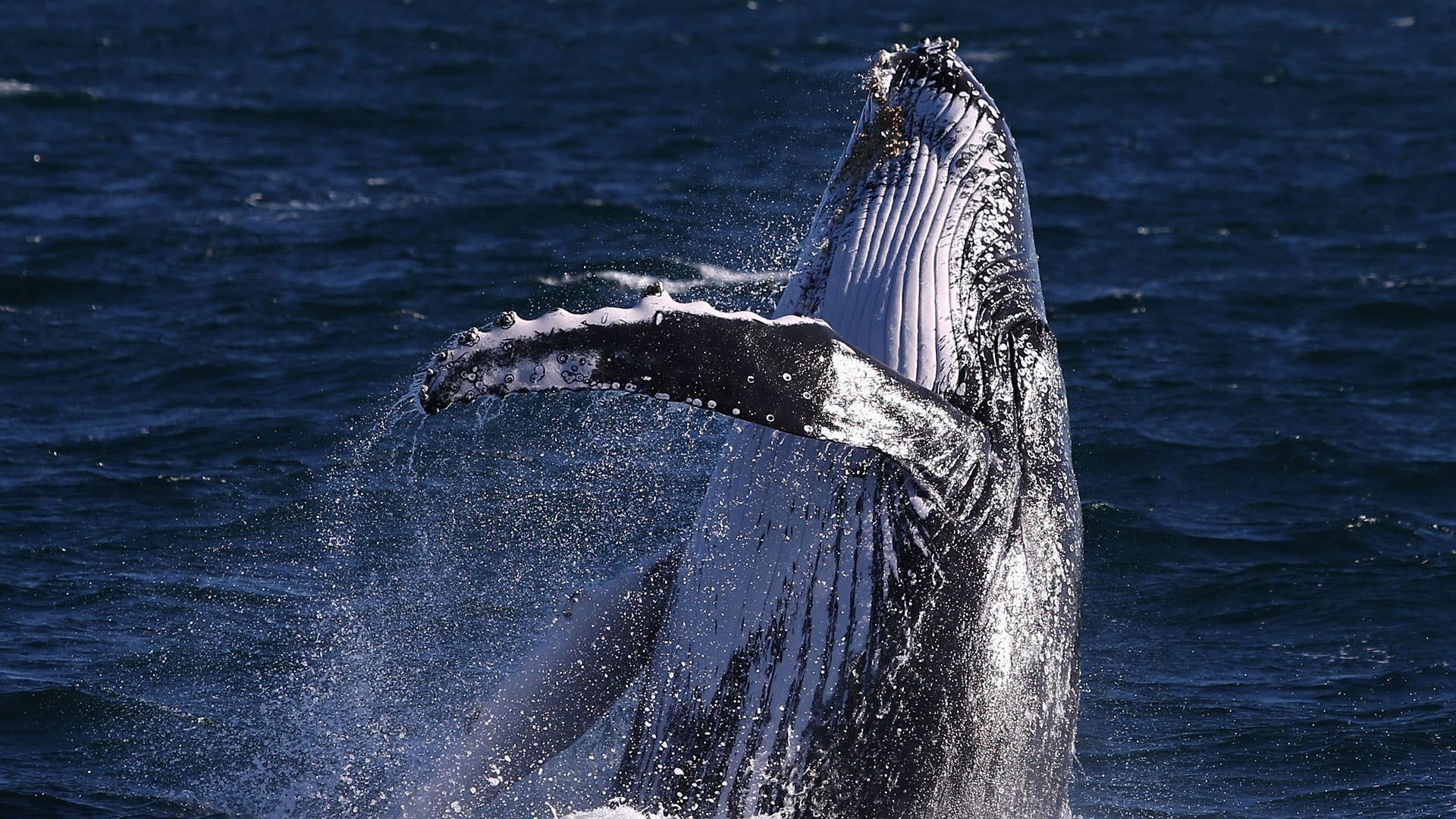
A humpback whale that was probably migrating to Antarctica appears to have made a bad turn and is now stuck in Kakadu's East Alligator River in the Northern Territory of Australia. As you may have guessed from that body of water's name, the river is populated by alligators oh, crocodiles. It turns out that mistaken identification led to a confusing moniker, but it's still filled with semiaquatic reptiles with sharp teeth.
This fuck-up on the part of the whale marks the first time that a humpback has swam so far inland, which sounds simulatenously cool and perplexing to locals. “It’s never occurred before, we’ve had no records of this in the past. We’ve collaborated with the traditional owners of East Alligator River, and they’ve also never seen humpback whales in any of the alligator rivers,” said senior scientist for the NT Department of Environment and Natural Resources, Dr. Carol Palmer.
The stranded humpback was actually part of a group of three, comprised of two adults and a large juvenile, though the other two whales that had been with it have either found their way out or just haven't surfaced in a very long time (it's not clear at the moment). In either event, scientists have expressed their concern that the whale(s) that remain in the river could get stuck if they continue to go upstream. For those concerned for the animals' welfare, it was reported that the one they still have eyes on is safe and breathing well.
“How it has ended up in the river, no one can be certain. It sort of feels like they’ve just made a wrong turn,” Palmer added.
The whales had been spotted as far back as Sept. 2 by marine ecologist Jason Fowler. At the time of the sighting, Fowler and his friends were taking part in a fishing trip along the river. Speaking to Guardian Australia, Fowler says he saw a "huge blow" about half-a-mile from his boat, and that he reasoned that what he saw was too big to have come from the blowhole of a dolphin.
“I knew I was looking at humpback whales," Fowler told the outlet. "I had the pics of Kimberley whales on my laptop to prove it, but my mind struggled to believe what I was seeing and my crew weren’t even entertaining the idea. Humpbacks don’t live in a croc-infested, muddy, tropical river in tepid, 27C water with the consistency of a thick café latte! Yet, they’re here!”
Coordinates were then sent to the government to investigate the sighting.
The hope at the moment is that the whale just figures it out on its own and eventually leaves. However, if that doesn't happen, authorities have very precise and delicate procedures for dealing with similar situations.
“The way that it’s worked in different situations is that they’ve used loud noises and banging sounds, with a number of boats, and just pushing them out that way," Palmer said.
As for the crocodile part, that doesn't really seem to be a problem on account of the fact that humpback whales are absolutely enormous. Specifically, adults can measure between 39-52 feet and weigh 25-30 metric tons.
Reports state the crocs are "entirely unfazed" by this breach of their habitat.
“When we saw the crocodiles from the helicopter, there was no interest whatsoever in the humpback whale,” says Palmer.
The situation continues to be monitored.

